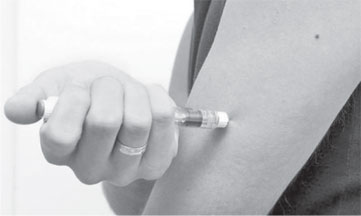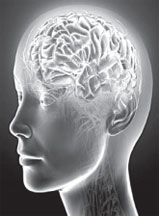|

Over 350 million adults have diabetes
Following explosion in prevalence spanning three
decades:
An estimated 350 million people in the world have diabetes, according
to a major new international study. The study shows that diabetes
prevalence has risen (in many cases sharply), or at best remained
unchanged, in virtually every part of the world during the past three
decades. The article authors Professor Majid Ezzati, and Dr Goodarz
Danaei, say Patients with diabetes have inadequate blood sugar control.
This can lead to heart disease and stroke, as well as damage to the
kidneys, nerves, and the retinae. High blood glucose and diabetes cause
some 3 million deaths globally each year, a number that will continue to
rise as the number of people affected increases.
 The researchers analysed fasting plasma glucose (FPG) data from 2.7
million participants aged 25 and over across the world, and used
advanced statistical methods to estimate prevalence. They found that the
number of adults with diabetes increased from 153 million in 1980 to 347
million in 2008. This is considerably higher than a 2009 study that
estimated 285 million adults globally had diabetes. While 70% of this
rise was due to population ageing (ageing increases the risk of
diabetes), the other 30% was due to higher prevalence across different
age groups, caused by increases in risk factors such as obesity. The researchers analysed fasting plasma glucose (FPG) data from 2.7
million participants aged 25 and over across the world, and used
advanced statistical methods to estimate prevalence. They found that the
number of adults with diabetes increased from 153 million in 1980 to 347
million in 2008. This is considerably higher than a 2009 study that
estimated 285 million adults globally had diabetes. While 70% of this
rise was due to population ageing (ageing increases the risk of
diabetes), the other 30% was due to higher prevalence across different
age groups, caused by increases in risk factors such as obesity.
The percentage of male adults with diabetes worldwide rose from 8.3%
to 9.8% (an 18% rise) across the three decade period, with adult female
prevalence increasing from 7.5% to 9.2% (a 23% increase).
To test whether or not someone has diabetes, doctors measure the
levels of glucose in a patient's blood after they have not eaten for 12
to 14 hours, since blood sugar rises after a meal. FPG below 5.6
millimoles per litre (mmol/L) is considered normal, above 7 mmol/L is
diagnostic of diabetes and an FPG level between 5.6 and 7 is considered
pre-diabetes. This new study found mean global FPG had risen in both men
and women.
Among high-income countries, the USA saw FPG rise at more than the
twice the rate of Western Europe over the three decades. In these
wealthy nations, diabetes and glucose levels were highest in USA,
Greenland, Malta, New Zealand and Spain, and lowest in the Netherlands,
Austria and France. Despite its obesity epidemic, the UK's diabetes
prevalence was lower than that of most other high-income countries.
In a league of 27 western high-income countries, British men were 5th
best (or had the 5th lowest diabetes rates), while British women were
8th best.
Globally, diabetes has taken off most in Pacific Island nations. In
states such as the Marshall Islands, one in three women and one in four
men have diabetes. Saudi Arabia also reported very high rates. Glucose
and diabetes were also particularly high in south Asia, Latin America,
the Caribbean, Central Asia, North Africa and the Middle East.
The region with the lowest glucose levels was sub-Saharan Africa,
followed by east and southeast Asia. Eastern Europe's diabetes
prevalence, while not low, changed little over the three decade period.
The authors noted a strong correlation between increasing diabetes
prevalence and rising body-mass index trends worldwide - a correlation
higher for women than for men. But they say: "However, genetic factors
associated with ethnic origin, fetal and early life nutritional status,
diet quality, and physical activity might also affect glycaemic values
and trends [and therefore diabetes prevalence]."
Professor Ezzati adds*: "Diabetes is one of the biggest causes of
morbidity and mortality worldwide. Our study has shown that diabetes is
becoming more common almost everywhere in the world. This is in contrast
to blood pressure and cholesterol, which have both fallen in many
regions. Diabetes is much harder to prevent and treat than these other
conditions."
Dr. Danaei adds*: "Unless we develop better programmes for detecting
people with elevated blood sugar and helping them to improve their diet
and physical activity and control their weight, diabetes will inevitably
continue to impose a major burden on health systems around the world."
In a linked Comment, Dr Martin Tobias, Health and Disability
Intelligence, Ministry of Health, Wellington, New Zealand, concludes:
"Worldwide...the urgent need is to strengthen basic surveillance of
dysglycaemia and diabetes, including standardised frameworks, case
definitions, survey methods, tools, and reporting protocols.
The forthcoming high-level meeting of the UN General Assembly on the
Prevention and Control of Non-communicable Diseases (New York, Sept
19-20, 2011), provides a welcome opportunity to strengthen global
commitment to non-communicable disease surveillance."
Source The Lancet
Exercise produces positive effects on intervertebral discs
Physical exercise has a positive effect on the formation of cells in
the intervertebral discs. This is shown by a study from the Sahlgrenska
Academy, University of Gothenburg, presented at the annual meeting of
the International Society for the Study of the Lumbar Spine (ISSLS),
which is currently taking place in Gothenburg.
 The study shows that physical activity has a positive effect on cells
in the intervertebral discs. The result is based on rats undergoing
treadmill exercise. It was subsequently studied how many new cells in
the intervertebral discs were formed in rats that had run on a treadmill
for about one hour a day compared with animals that had only moved
around freely in a cage. "This is new knowledge showing that the
intervertebral discs can be positively affected by physical activity,"
says spine surgeon Helena Brisby at Sahlgrenska University Hospital.
Pain in the lumbar spine is common and may be due to disc degeneration,
which means that the disc cells no longer have normal functions. The study shows that physical activity has a positive effect on cells
in the intervertebral discs. The result is based on rats undergoing
treadmill exercise. It was subsequently studied how many new cells in
the intervertebral discs were formed in rats that had run on a treadmill
for about one hour a day compared with animals that had only moved
around freely in a cage. "This is new knowledge showing that the
intervertebral discs can be positively affected by physical activity,"
says spine surgeon Helena Brisby at Sahlgrenska University Hospital.
Pain in the lumbar spine is common and may be due to disc degeneration,
which means that the disc cells no longer have normal functions.
Based on the results of the study, the research team led by Helena
Brisby and Björn Rydevik intends to go on to study whether the cells in
degenerated discs respond as positively to exercise as they have now
shown to do in normal discs.
"Physical exercise is already an important part of the treatment for
back pain today, but there is limited knowledge about the specific
effect that exercise has on the discs and what the optimal dose of
exercise is," says Prof. Björn Rydevik at Sahlgrenska Academy.
The research team plan for continued studies with this animal model,
which hopefully will establish whether exercise can prevent disc
degeneration and could consequently prevent back pain, but also aims to
study the effect of exercise when back problems have already arisen.
Sources: University of Gothenburg, AlphaGalileo Foundation
Effect of asperger syndrome noticeable in babies
People with Asperger syndrome have problems with social interaction
and attentiveness, and are also sensitive to noise and light. Several of
these characteristics were evident to parents during their child's first
two years, reveals Petra Dewrang at Gothenburg University.
In her thesis, Dewrang investigated how individuals with Asperger
syndrome aged 14-24 perceive themselves relative to their diagnosis.
 The thesis is based on interviews, tests and self-evaluations. A
questionnaire for parents also resulted in important descriptions of
these individuals' behaviour and development from infancy onwards. The thesis is based on interviews, tests and self-evaluations. A
questionnaire for parents also resulted in important descriptions of
these individuals' behaviour and development from infancy onwards.
The results show first and foremost that the similarities are greater
than the differences when the Asperger group and the comparison group
describe their lives.
"But the differences that do exist are vital for understanding how
people with Asperger syndrome stand the best chance of getting by," says
Dewrang.
The Asperger group were as content with themselves and their lives as
the comparison group.
But they found it harder to build relationships with other people,
and their plans for the future were less "adventurous". Parents and
siblings were more present in their lives than is normal for this age
group, even after they had left home.
On the other hand, they were just as good at social cognition as the
comparison group when they had to explain why the key person in a story
reacted in a certain way.However, the ability to theoretically
understand other peoples' thoughts and feelings are not always enough
for making friends in real life.
Sources: University of Gothenburg, AlphaGalileo Foundation.
Scientists with new insight into the brain processes
The yellow jacket (Rocky, the mascot of the University of Rochester)
appears to be expanding. But he is not. He is staying still.
We simply think he is growing because our brains have adapted to the
inward motion of the background and that has become our new status quo.
Similar situations arise constantly in our day-to-day lives jump off
a moving treadmill and everything around you seems to be in motion for a
moment.
This age-old illusion, first documented by Aristotle, is called the
Motion Aftereffect by today's scientists. Why does it happen, though? Is
it because we are consciously aware that the background is moving in one
direction, causing our brains to shift their frame of reference so that
we can ignore this motion? Or is it an automatic, subconscious response?
Davis Glasser, a doctoral student thinks he has found the answer.
In their paper, the scientists show that humans experience the Motion
Aftereffect even if the motion that they see in the background is so
brief that they can't even tell whether it is heading to the right or
the left.
Even when shown a video of a pattern that is moving for only 1/40 of
a second (25 milliseconds) so short that the direction it is moving
cannot be consciously distinguished a subject's brain automatically
adjusts. If the subject is then shown a stationary object, it will
appear to him as though it is moving in the opposite direction of the
background motion. In recordings from a motion centre in the brain
called cortical area MT, the researchers found neurons that, following a
brief exposure to motion, respond to stationary objects as if they are
actually moving. It is these neurons that the researchers think are
responsible for the illusory motion of stationary objects that people
see during the Motion Aftereffect.
This discovery reveals that the Motion Aftereffect illusion is not
just a compelling visual oddity: It is caused by neural processes that
happen essentially every time we see moving objects. The next phase of
the group's study will attempt to find out whether this rapid motion
adaptation serves a beneficial purpose in other words, does this rapid
adaptation actually improve your ability to estimate the speed and
direction of relevant moving objects, such as a baseball flying toward
you.
Source: University of Rochester
Genes influence memory and sense of orientation
How do our brains process memory and sense of orientation? Scientists
are gaining insight by studying rats with implanted genes that prompt
neurons to fire on command.
 Researchers at the Norwegian University of Science and Technology
(NTNU) in Trondheim are studying how the human brain carries out its
tasks related to memory and spatial orientation. Researchers at the Norwegian University of Science and Technology
(NTNU) in Trondheim are studying how the human brain carries out its
tasks related to memory and spatial orientation.
The knowledge being generated at CBM will also apply to areas of the
brain other than those involved in these specific functions.
"The brain uses the same building blocks for a variety of functions,
so our findings for memory and sense of orientation will likely apply to
the rest of the brain as well," says Professor Edvard Moser.
The researchers are identifying which types of neurons are found in
the brain's centres for memory and sense of orientation, and their
respective functions. This is essential information since different
types of memories are formed and stored in different neurons and neural
pathways. In order to identify the neurons, the researchers use gene
technology and other molecular biological methods. CBM is one of the
first research groups in the world to implement a new technique for
identifying the functions of specific neurons.
"First we insert a gene for light sensitivity into the neurons we
want to study," explains Professor Edvard Moser. "Then when we
illuminate the neurons by laser, they send out electrical signals. By
recording where these signals originate, we can see precisely where in
the centres for memory and sense of orientation those neurons are
located."
Sources: Research Council of Norway, AlphaGalileo Foundation
The newest AIDS drug is first to be approved in 3 years
Two decades after Rutgers scientists began working with Paul Janssen,
a legendary drug developer to create new and potent drugs to fight AIDS,
the FDA has approved the second anti-HIV drug that came from this
collaboration. "For a drug to successfully make it to the finish line,
countless obstacles must be overcome," said Board of Governors Professor
of Chemistry and Chemical Biology Eddy Arnold, who led the Rutgers team
of scientists. "As a researcher in biomedical sciences I can tell you
that helping to create new medicines is something you always dream
about."
The newest AIDS drug, (rilpivirine) Edurant- the first to be approved
by the U.S. Food and Drug Administration in the last three years and
manufactured by Tibotec Therapeutics, a subsidiary of J&J - was
developed in 2001 and took a decade to make its way through the
regulatory process and clinical trials.
"From the beginning, we knew this would be a long-term project," said
Arnold, who is also a resident faculty member of the Center for Advanced
Biotechnology Medicine. His research team received $20 million for the
project, primarily from the National Institutes of Health, including two
prestigious MERIT (Method to Extend Research in Time) NIH awards, an
honor bestowed on less than 5 percent of NIH grant recipients. "Many
challenges have been faced and overall it has been more like a marathon
than anything else," he said.
Resistant strains of HIV are a growing medical problem because the
virus is constantly mutating, and the changes can cause existing AIDS
drugs from being able to work.
Arnold's team developed innovative models that explain not only why
Edurant, approved by the FDA last month, and Intelence, approved in
2008, are particularly effective against drug-resistant viruses but can
also be used in the development of treatments for a wide variety of
other diseases. The gist of the model is that flexibility of a drug can
allow it to adapt to changes in HIV.
Clinical trials for Edurant, which included more than 1,300 adults
with HIV, indicated that 83 percent of those who were given this
anti-AIDS drug for a 48-week period had undetected levels of HIV in
their blood at the conclusion of the clinical trial. The new drug can be
prescribed as a once-a-day pill to HIV-positive adults who have not
received any prior treatment or therapy. Besides being available in the
United States, a generic form of the drug will be made available to
millions of people in Saharan Africa, India and other developing
nations.
"Development of this newest AIDS drug represents a wonderful example
of the biomedical power that can be harnessed by scientific
collaborations and partnerships between university, government, and
private sector research enterprises," said Kenneth J. Breslauer, dean of
Life and Health Sciences. "No more satisfying and important outcome can
result from university research."
This scientific collaboration began in 1987 when the Rutgers team
entered into a partnership with Stephen Hughes, an AIDS researcher at
the National Cancer Institute. Both were interested in understanding the
molecular structure and function of reverse transcriptase, an essential
part of the AIDS virus, not only for its fundamental significance, but
also because they believed it would provide guidance for the design of
more effective drugs.
Source: Robin Lally Rutgers University
How monkeys survive AIDS-like infection
Sooty mangabeys, a type of African monkey, have intrigued scientists
for years because they can survive infection by SIV, a relative of HIV,
and not succumb to AIDS.
Researchers have identified a way some of sooty mangabeys' immune
cells resist infection: they close the gates that SIV and HIV use to get
into the cell. The findings may lead to strategies to help HIV-infected
individuals cope better with infection.
 The results are published online in the journal Nature Medicine. The results are published online in the journal Nature Medicine.
"We have shown sooty mangabeys can prevent SIV from infecting a very
important part of the immune system," says first author Mirko Paiardini,
PhD, senior research scientist at Yerkes National Primate Research
Center, Emory University. "This protection from infection comes from
reducing the levels on the cell surface of a molecule that SIV uses to
enter the cell."
Co-first author is postdoctoral fellow Barbara Cervasi. The senior
author is Guido Silvestri, MD, chief of microbiology and immunology at
Yerkes National Primate Research Center, Emory University.
Collaborators included investigators from NIH, University of
Pennsylvania, University of Pittsburgh and University Hospital Ulm.
To infect a cell, HIV and SIV need to find two molecules on the
cell's surface. Scientists call these molecules co-receptors, and they
can be thought of as gates. One of the co-receptors is CD4, which
appears on immune cells called T cells. The other is called CCR5.
Stimulating a T cell usually increases the level of CCR5, facilitating
infection.
Paiardini, Cervasi and their colleagues found that in sooty
mangabeys, a type of T cell called a central memory T cell doesn't turn
on CCR5.
This means that even when a sooty mangabey is infected with SIV, some
T cells can mostly avoid being killed by the virus.
Memory T cells help the immune system respond to an infection faster
and stronger the second time around. Central memory T cells are
long-lived and found in lymph nodes, in contrast to effector memory T
cells, which have shorter life spans and are found mostly in tissues,
such as the intestines, Paiardini says.
"Not all T cells are created equal," he says. "Some appear to be more
important than others for keeping the immune system up and running.
This is why having central memory T cells resistant to infection is
so valuable. By protecting central memory T cells, sooty mangabeys avoid
the loss of T cells and the chronic immune activation that are the
hallmarks of AIDS in humans."
Source: Lisa Newbern Emory University
|

